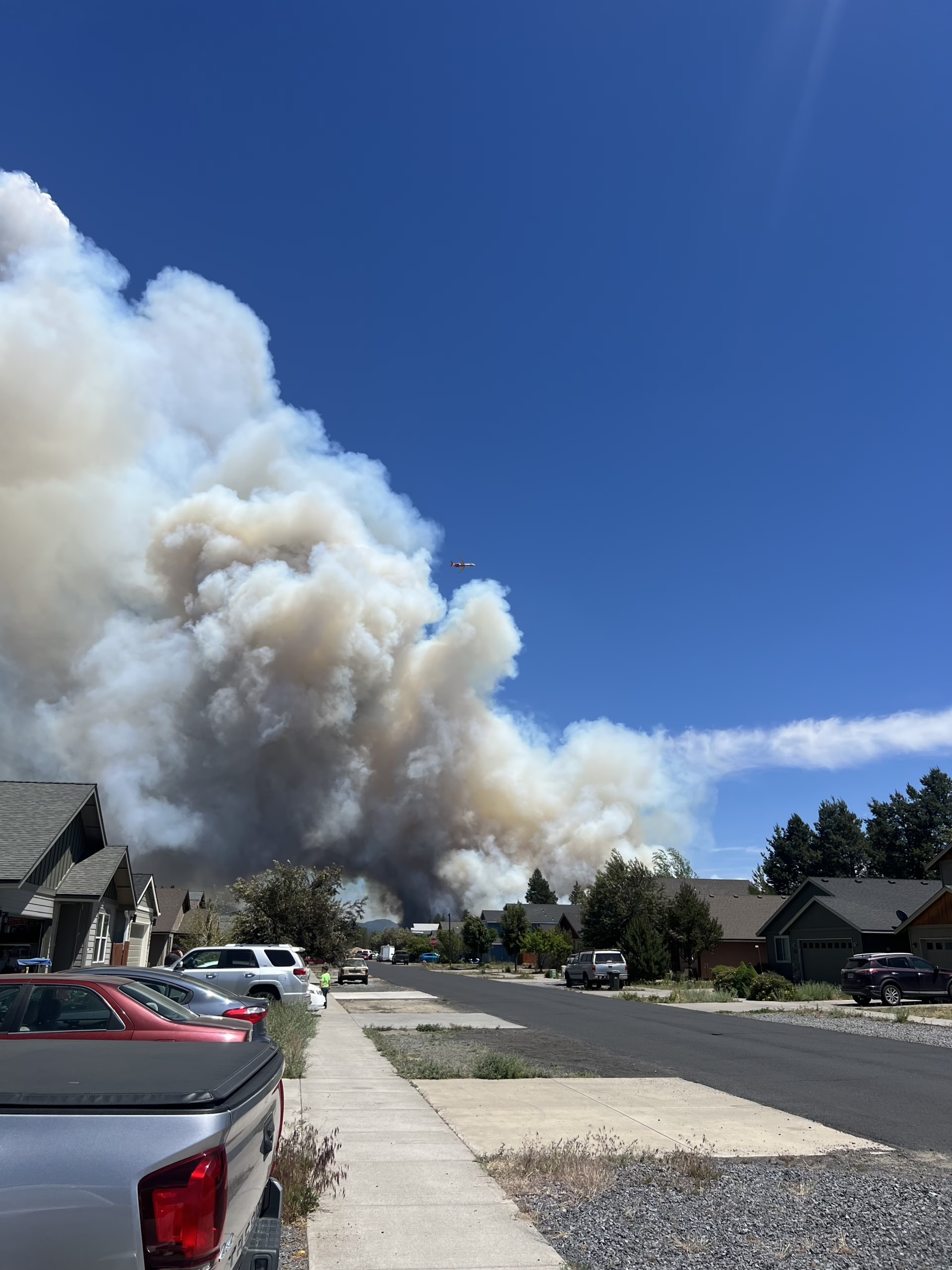
1. Stay Informed
As the warm, dry months of summer approach, Central Oregon residents must brace themselves for the annual wildfire season. Nestled amidst forests, mountains, and high desert landscapes, this region is particularly susceptible to wildfires. Here are some crucial steps to ensure you and your loved ones stay safe and prepared during this challenging time.
Staying informed is the first line of defense. Keep up-to-date with local news and weather reports, and subscribe to emergency alert systems such as the Deschutes County Alert System. Regularly check websites like the Oregon Department of Forestry and InciWeb for updates on current fire conditions and potential evacuations. A helpful app for consistent updates on active wildfires Watch Duty.
2. Create a Defensible Space
Creating a defensible space around your home can significantly reduce the risk of wildfire damage. Here are some key steps:
- Clear Flammable Vegetation: Remove dead leaves, pine needles, and other debris from your yard, roof, and gutters.
- Prune Trees and Shrubs: Trim branches at least 10 feet from your home and other structures. Remove lower tree branches to prevent fire from climbing.
- Maintain a Safety Zone: Create a 30-foot zone around your home with fire-resistant plants and materials. Keep grass mowed and well-watered.
3. Prepare an Emergency Kit
An emergency kit can be a lifesaver during wildfire season. Essential items to include:
- Water and Non-Perishable Food: At least a three-day supply for each family member.
- Medications and First Aid Kit: Include prescription medications and basic first aid supplies.
- Important Documents: Copies of insurance papers, identification, and other critical documents.
- Clothing and Personal Items: Sturdy shoes, clothing for various weather conditions, and personal hygiene items.
- Electronics: A battery-powered or hand-crank radio, extra batteries, and portable phone chargers.
For a checklist of what to pack click here.
4. Develop a Family Emergency Plan
Having a family emergency plan ensures everyone knows what to do in the event of a wildfire. Key components include:
- Evacuation Routes: Identify multiple routes out of your area and practice them with your family.
- Meeting Points: Designate safe meeting locations outside the danger zone.
- Communication Plan: Ensure all family members have a way to communicate if separated. Establish an out-of-area contact person who can relay information.
5. Know the Evacuation Levels
Understanding the three levels of evacuation can help you act quickly and appropriately:
- Level 1: Be Ready: Prepare for potential evacuation. Gather supplies and stay informed.
- Level 2: Be Set: Be ready to leave at a moment’s notice. Pack your emergency kit in your vehicle.
- Level 3: Go: Leave immediately. Follow the instructions of local authorities and evacuate to a predetermined safe location.
6. Fire-Resistant Home Improvements
Consider making fire-resistant upgrades to your home, such as:
- Fire-Resistant Roofing: Use materials like metal, tile, or asphalt shingles.
- Ember-Resistant Vents: Install fine mesh screens over vents to prevent embers from entering your home.
- Non-Combustible Siding: Use materials like stucco, brick, or concrete.
7. Community Involvement
Wildfire preparedness is a community effort. Participate in local fire safety programs and initiatives. Join or form a neighborhood wildfire preparedness group to share resources and information.
Wildfire season in Central Oregon requires vigilance and preparation. By staying informed, creating a defensible space, preparing an emergency kit, developing a family emergency plan, understanding evacuation levels, making fire-resistant home improvements, and engaging in community efforts, you can protect your home and loved ones. Remember, preparedness is key to staying safe during wildfire season. Stay alert, stay safe, and take proactive steps to safeguard your community.

